Table of Contents
Pterostilbene (trans-3,5-dimethoxy-4-hydroxystilbene, PTE) is a naturally derived polyphenol antioxidant found in blueberries, grapes, and in the bark of the Indian Kino Tree.
Pterostilbene, a naturally occurring dimethylether analog of resveratrol, is a phytoalexin that, like resveratrol, is made by plants to fight infection, insect infestation, heat and ultraviolet exposure.[i]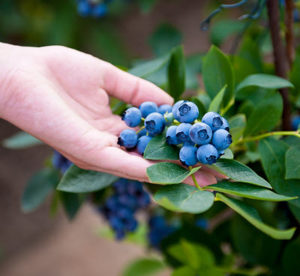
Pterostilbene and resveratrol are both ‘stilbene’ polyphenols. But Pterostilbene is much more bioavailable than resveratrol. It rapidly crosses the blood-brain barrier, and stays in your body much longer than resveratrol (half-life of 105 mins. vs. 12 mins.).[ii]
Pterostilbene shows 80% bioavailability while resveratrol only has 20% bioavailability.[iii]
Pterostilbene is gaining a reputation in the nootropics community for controlling brain inflammation, boosting dopamine, helping reverse cognitive decline and fighting brain cell aging.
Pterostilbene helps:
- Neuroplasticity. Pterostilbene increases hippocampus neurogenesis, boosts insulin-like growth factor-1 (IGF-1), and modulates the receptor kinase pathway that is central in the learning and memory process. Increasing neuroplasticity in the hippocampus improves learning and memory functions.[iv]
- Neuroprotectant. Pterostilbene is a potent antioxidant and anti-inflammatory. It reduces reactive oxygen species (ROS), and increases the antioxidant glutathione and superoxide dismutase (SOD).[v] Crucial to overall brain health, maintaining signaling pathways and leading to improved learning and memory.
- Brain-Derived Neurotrophic Factor (BDNF). Pterostilbene has been shown in clinical trials to elevate BDNF in the hippocampus. Improving learning and memory.[vi]
What is Pterostilbene?
Pterostilbene (trans-3,5-dimethoxy-4-hydroxystilbene, or PTE) is a naturally-derived polyphenol antioxidant primarily found in blueberries and the Indian Kino Tree.
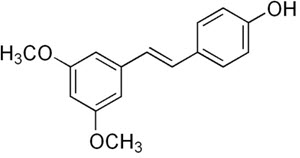
Pterostilbene and resveratrol are both ‘stilbene’ polyphenols. And both boost cognition, learning and memory. But Pterostilbene works differently than Resveratrol. And is not a replacement for Resveratrol.
Here’s why…
Resveratrol has been getting a lot of press lately because of its ability to boost learning, memory and cognitive power. But Pterostilbene is much more bioavailable than resveratrol. And may be the preferred polyphenol to add to your nootropic stack.
PTE stands out because of its structural differences from Resveratrol. Pterostilbene has two methoxy groups and one hydroxyl group. Resveratrol has three hydroxyl groups.
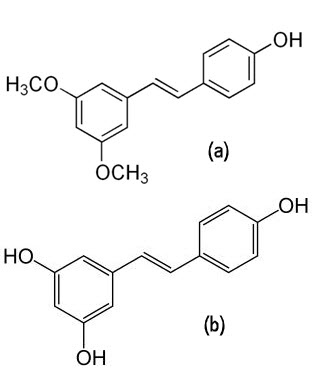
This combination in Pterostilbene improves lipophilicity which means it can dissolve in fats, oil and lipids. Lipids are what makes up the shell or membrane encasing each one of your cells.
So Pterostilbene can more easily cross through your cell walls. In fact, several published studies refer to Pterostilbene as having much better bio-activity than Resveratrol.
You can easily add Pterostilbene to your diet. It’s found in blueberries, cranberries, sparkleberries, lingonberries, grapes, and in the bark of the Indian Kino Tree.
But to get the therapeutic benefits of PTE, a preferred way of getting this potent antioxidant is to take it as a supplement.
Pterostilbene has been shown to prevent the loss of the neurotransmitter dopamine from memory centers in your brain. Supplementing with PTE raises its levels in your hippocampus which is where memory is processed.
Pterostilbene also has the effect of caloric restriction on cells which profoundly effects gene expression. This tricks your body into improving memory because it’s thinking there is food scarcity. And it provides an adaptive response.
The polyphenol Pterostilbene increases neuroreceptor sensitivity which improves neuronal signaling. And PTE promotes the formation of new synaptic connections which boosts neuroplasticity. Improving long-term potentiation resulting in formation of long-term memories.
How does Pterostilbene work in the brain?
Pterostilbene boosts brain health in several ways. But two in particular stand out.
- Pterostilbene mimics caloric restriction. Restricting calories by fasting has been implicated in increased synaptic plasticity resulting in improved learning. Scientists determined that this enhancement in synaptic plasticity was caused by increased brain cell signaling. The signaling increase is mediated by CREB (cAMP response element binding protein).[vii]
CREB has a proven role in neuronal plasticity and long-term memory formation in the brain. And has been shown to be critical in the formation of spatial memory.[viii]
In several studies, Pterostilbene has been shown to modulate gene expression. PTE up-regulates those genes that stimulate apoptosis (programmed cell death). And down-regulate those genes that allow cancer cells for example, to invade and metastasize.[ix]
And this gene modulation is linked to increases in CREB and Brain-Derived Neurotrophic Factor (BDNF). An increase in BDNF helps long-term potentiation needed for the development of long-term memory.
In this study, researchers supplemented aging animals with blueberry extract for 12 weeks. This extract contained PTE. Spatial working memory tasks emerged within 3 weeks of supplementation. And persisted for the remainder of the testing period.
This memory enhancement correlated with the activation of CREB. And increases in brain-derived neurotrophic factor (BDNF) in the hippocampus. In fact, PTE was implicated in the entire chain of the ERK-CREB–BDNF signaling pathway that boosts memory.[x]
- Pterostilbene boosts dopamine. But it increases dopamine in kind of a ‘back door’ approach. We have plenty of research showing that neurodegeneration is caused by oxidative stress. And that anti-oxidants can stop and even reverse damage to neurons. Potentially leading to an increase in the release of important neurotransmitters like dopamine. PTE is a potent antioxidant.
One study done a Tufts University in Boston investigated stilbene compounds like PTE and their effect on reversing the effects of aging. The researchers used 344 Fisher rats and gave them either a low (0.004%) or a high (0.016%) concentration of Pterostilbene.
Results from this study showed that PTE was effective in reversing cognitive deficits. And Pterostilbene increased dopamine release. A boost in working memory correlated with Pterostilbene levels in the hippocampus.[xi]
How things go bad
As we get older, the chemistry in our brain cells and energy metabolism changes.
↓ Neurons and synapses degenerate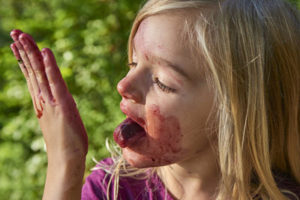
↓ Recall, reaction time, memory, and mood diminish
↑ Anxiety levels increase
↓ Neurotransmitter levels decline
↓ Oxidation damages brain cells
All of these age-related changes are contributing factors to the neurodegenerative diseases of aging including Alzheimer’s, Parkinson’s and dementia.
But even if things haven’t degenerated to such a debilitating level, PTE can help.
Pterostilbene Benefits
Pterostilbene helps improve memory and provides neuroprotection through different mechanisms of action than most other nootropics in a typical stack.
PTE works primarily through gene expression. Easily passing through cell walls, PTE modulates genes that influence other proteins, mitochondria and even cell DNA.
We talk a lot about apoptosis (programmed cell death) as a negative event in nootropic circles. But the reality is that apoptosis is an integral part of a healthy brain.
Pterostilbene stimulates apoptosis to make way for healthy new cells to be born (neurogenesis). And helps down-regulate invaders like cancer cells. Preventing them from invading healthy brain tissue and metastasizing.[xii]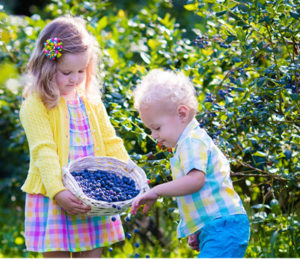
Some supplement makers are mistakenly marketing their Pterostilbene as an “upgraded-version” of Resveratrol. Likely because PTE has better bioavailability. But the research shows Pterostilbene and Resveratrol work together to boost cognitive health.
Resveratrol works at the beginning of the cascade of neurochemical events that activates genes leading to cognitive benefits. And Pterostilbene provides its gene expression effects in the downstream portion of this molecular cascade.
Pterostilbene has a kind of ‘reverse effect’ on boosting dopamine. Rather than directly increasing dopamine levels like some nootropics, PTE prevents the loss of dopamine in brain memory centers.
This is not nearly as strange as it sounds. Because this mechanism of action is similar to how Ritalin works as a stimulant. By preventing the uptake of dopamine by neuroreceptors, Ritalin keeps more dopamine available for increased alertness, cognition and memory formation.
PTE prevents brain injury from lack of blood flow and could have profound applications in the recovery from stroke. This effect could be beneficial even in healthy brains who suffer from brain fog due to poor cerebral circulation.
Pterostilbene provides well-documented antioxidant activity.[xiii] Affecting neuroreceptor sensitivity for improved neural signaling. PTE even promotes new synaptic connections between neurons. Improving neuroplasticity leading to better learning and memory.[xiv]
How does Pterostilbene feel?
Neurohackers report that supplementing with Pterostilbene boosts energy levels, provides clearer thinking and improved mood.
Taken before an anxiety-producing event, PTE takes the edge off with no sedation.
Aging Gen-Xers report feeling younger after using Pterostilbene. They feel more alert, less joint and lower back pain, more energy, less anxiety, and better focus.
Pterostilbene Clinical Research
We have hundreds of studies talking about the benefits of Resveratrol. But mostly animal studies for Pterostilbene. So just bear in mind that life is not a clinical study.
Take what you can from this article on PTE, and read user reviews on some of the major sites. Then add Pterostilbene to your stack and see if it makes a difference in your life.
If you notice a difference, please bookmark this page, come back and leave a comment below this piece. And help other neurohackers out.
Pterostilbene Reduces Anxiety
A study at the University of Mississippi investigated using Pterostilbene for anxiety disorders. Using mice, the team administered PTE in 1 – 10 mg/kg doses. Measuring the effects of each dose for its anxiolytic effect.
To measure this mood effect, the team evaluated decreases in extracellular regulated kinase 1 and extracellular regulated kinase 2 in the mice. These signaling pathways are involved in mood modulation in both animals and humans.[xv]
The research team found that no anxiolytic (anti-anxiety) activity was found at higher doses of Pterostilbene. But at lower doses of PTE (1 and 2 mg/kg), there was significant anti-anxiety activity in the brain. And unlike standard anti-anxiety drugs, there was no impairment of motor movement. In other words, there were no negative physical effects of using PTE for anxiety issues.
The team concluded that, “These results suggest that Pterostilbene has the potential for therapeutic drug development for anxiety disorders.”[xvi]
Pterostilbene Improves Cognition
Recent studies have shown that Pterostilbene and Resveratrol protect against age-related diseases like Alzheimer’s. So this study looked at comparing the two ‘stilbenes’ to find out which was more effective in improving cognitive deficits, and Alzheimer’s pathology.
The pathology of Alzheimer’s can be broken down into; cellular stress, inflammation and other pathology markers known to be altered in the disease.
Researchers at Case Western Reserve University in Cleveland, Ohio looked at the mechanism of action behind each of these pathology markers. They used SAMP8 mice which are bred to model age-related Alzheimer’s.
Two months of a Pterostilbene diet (but not Resveratrol) improved radial arm water maze function in these mice compared to controls who were fed a standard mouse diet.
This is where it gets good. Markers of cellular stress, inflammation, and Alzheimer’s pathology were all positively modulated by Pterostilbene.
The team concluded that “diet-achievable doses of Pterostilbene is a potent modulator of cognition and cellular stress”. Much better than Resveratrol.
The research team said that this success in improving cognition with Pterostilbene was due to its ability to increase peroxisome proliferator-activated receptor alpha (NR1C1) expression.
This particular receptor is encoded by the pPARA gene. And as you may recall from earlier in this article, Pterostilbene’s big claim to fame is ‘gene expression’ and modulation.
The team also noted that PTE works better than Resveratrol because of its increased ability to cross the blood-brain barrier. And superior bioavailability.[xvii]
Pterostilbene is one of the only nootropics that improves cognition directly by modifying genes (gene expression).
Pterostilbene Protects Neurons
Blueberries have been reported to provide long-term neuroprotective effects. But researchers in China wanted to dig deeper to determine what in blueberries provided this benefit. Was it Pterostilbene?
The research team dosed mice with 2.5 – 80 mg/kg of PTE for 3 days. Then induced a middle cerebral artery occlusion for 90 minutes. In other words, they gave the mice a stroke.
The team gave the mice another dose of PTE immediately after the stroke, at 1 hour and at 3 hours. The team found the most therapeutic window for neuroprotection was 1 hour after the stroke dosed at 10 mg/kg.
Pterostilbene improved motor function, eliminated blood flow disruption, increased neuron survival and reduced cell apoptosis (cell death). The team concluded that you could protect the brain from stroke using Pterostilbene.
And this neuroprotective effect of Pterostilbene was associated with preventing oxidative stress and neuron death.[xviii]
Pterostilbene Recommended Dosage
Pterostilbene is found in small quantities in some plant foods. A cup of blueberries for example, contains only about 20 mcg of Pterostilbene.
But even in small amounts, Pterostilbene is believed to provide some of the benefits talked about in this article.
Based on all of the published animal studies, the recommended daily dose of Pterostilbene is 50 mg for cognitive benefit.
Pterostilbene Side Effects
The primary “side effect” of using Pterostilbene in your nootropic stack is – you’ll feel better. You should have more energy and thinking should be clearer and faster. And Pterostilbene provides an anti-anxiety effect.
Pterostilbene is non-toxic and supplementation is well-tolerated by most people.
One randomized, double-blind placebo-controlled trial conducted at the University of Mississippi School of Pharmacy did an analysis of safety in humans.
80 subjects were divided into four equal groups. Each group received either; 125 mg of Pterostilbene twice daily, the 2nd group 50 mg twice daily, the 3rd group 50 mg plus 100 mg of grape extract twice daily, and the 4th group a matching placebo twice daily. The trial ran for 6-8 weeks.
The researchers concluded that “Pterostilbene is generally safe for use in humans up to 250 mg per day”.[xix]
But the benefits from Pterostilbene follow a bell-curve. With little or no benefit at lower doses, optimal benefits around 50 mg per day, and no benefit again at much higher doses.
Like other nootropics, more of Pterostilbene is not necessarily better.
Best Type of Pterostilbene to Buy
Pterostilbene comes in tablet or capsule form and is available by several well-known supplement makers. Some pre-made nootropic stacks include PTE in their formula.
Silbinol® is a branded form of Pterostilbene made by Sabinsa and derived from the Indian Kino Tree (Pterocarpus marsupium). It is standardized for 5%, 30% and 90% Pterostilbene.
You can also get Pterostilbene from blueberries. But you’d have to eat a lot of berries to get your quota of 50 mg per day. Blueberry extract supplements contain Pterostilbene. But do not typically indicate exactly how much is in the extract.
Nootropics Expert Recommendation
Pterostilbene 50 mg per pay
 I recommend using Pterostilbene as a nootropic supplement.
I recommend using Pterostilbene as a nootropic supplement.
Your body does not make Pterostilbene on its own. You can get some Pterostilbene from blueberries and a few other fruits. But studies have shown we may not get an adequate supply of Pterostilbene from food sources in our diet. Especially if you don’t eat a lot of fruit every day.
Pterostilbene has been used in Ayurvedic medicine for thousands of years as a “blood tonic”.
Pterostilbene helps protect neurons, and boosts other antioxidants that shield your brain cells from oxidative stress. Protecting brain cells in memory centers of the brain helps boost dopamine. Resulting in better alertness, learning and memory.
The boost in memory and learning also comes from Pterostilbene’s ability to promote neuroplasticity. And PTE helps maintain cerebral circulation by protecting brain blood vessels from lack of oxygen, and oxidative stress.
Pterostilbene is especially helpful for those dealing with anxiety. PTE provides an anxiolytic effect without the sedation you’d normally get from using anti-anxiety drugs.
I suggest starting with a dose of at least 10 mg daily. And Pterostilbene is a great compliment to a stack including any nootropic. It works particularly well when combined with Resveratrol.


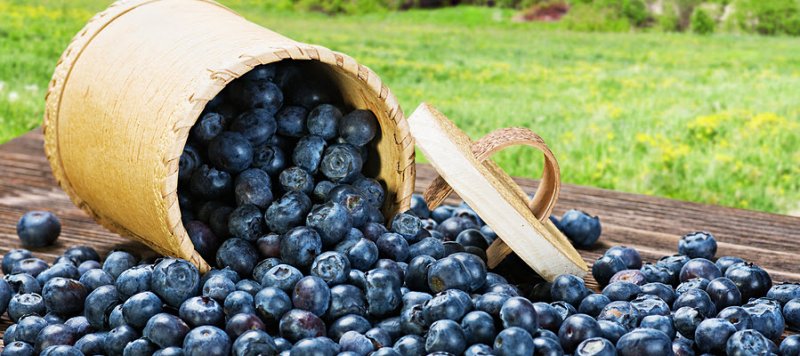





Join The Discussion - 41 comments
Francesca
July 26, 2024
Hi David, Just started reading about this for cognitive and anxiety. Sadly here in the EU we can’t find most of the brands you talk about, iHERB does delivery here in Portugal and they have trans-Pterostilbene, you didn’t have anything on “trans Pterostilbene”
(from 56 mg of Pterocarpus marsupium, Vijayasar) (Wood) by Jarrow Formula, the only other is CA Gold showing Pterostilbene (trans-3,5-dimethoxy-4-hydroxystilbene), plus they show brown rice as an added ingredient, so one wonders filler? Would you recommend either of these? The price difference is quite significant. Thank you in advance
Tova
September 17, 2022
Hi can you take this when also taking prescribed adderall? If so, do I use reservatrol and this during the day, or at night?
David Tomen
September 20, 2022
Tova, take one or the other. There is no benefit to using both Resveratrol and Pterostilbene.
It would be of benefit if using Adderall because they increase BDNF that hopefully will repair some of the damage caused by using Adderall.
Francesca
July 26, 2024
Hi David, I’m a little confused here as in your above article you talk about stacking the two together, or is this just in this case where he is using Adderall?? in which case only use one.
Thank you
David Tomen
July 26, 2024
Francesca, Pterostilbene and resveratrol are both ‘stilbene’ polyphenols. But Pterostilbene is much more bioavailable than resveratrol. It rapidly crosses the blood-brain barrier, and stays in your body much longer than resveratrol (half-life of 105 mins. vs. 12 mins.). That is why I say use one of the other and there is no need to use both.
And look at the chemical name Pterostilbene (trans-3,5-dimethoxy-4-hydroxystilbene). Trans Pterostilbene and Pterostilbene are the same thing. Rice is used a flow agent which is safer than using magnesium stearate which suppresses your immune system. A “glow agent” is a substance that prevents powder from clogging up encapsulation machines.
colin horstmann
July 6, 2022
Thanks for the information , i’ll test it very soon!
Juck
March 30, 2022
Hi, David! What’s with this “trans” thing, like Trans-Pterostilbene or Trans-Resveratrol? Are they different from those without “trans”? Many thanks!
David Tomen
March 30, 2022
Juck, both trans-pterostilbene and cis-pterostilbene are natural forms of this compound. But the “trans” form is more stable and preferred when it comes to supplements. It has to do with a group of atoms being on one side or the other of the compounds physical structure.
Ted
January 11, 2022
Hi David! Thanks for all your research, I think I read some of it most every day.
I have a question about taking Pterostilbene – is it best taken on an empty stomach, or with a meal?
David Tomen
January 11, 2022
Ted, Pterostilbene is fat-soluble so must be taken with a healthy fat to ensure absorption. You can that with a meal containing healthy fats or a tablespoon of unrefined coconut oil each time you use your supplements.
Juck
February 20, 2022
David, I bought PTE from Monoherb. Why do they recommend taking PTE before meals? Same with Double Wood, who recommends taking their Finestin on an empty stomach. I’m confused because you say that both polyphenols are fat-soluble.
David Tomen
February 21, 2022
Juck, I’m guessing that the person writing the copy for their labels have not done their homework. A simple Google search will back up my claim the a particular supplement or ingredient in that supplement is fat-soluble or water soluble.
Jurgen
December 27, 2021
Hi David,
What is the most potent FAAH inhibitor?
Maca
Chocamine (cacao extract)
CBD
Pterostilbene
???
David Tomen
December 27, 2021
CBD Oil
Jurgen
December 28, 2021
Hi David,
Did you ever review this supplement: Palmitoylethanolamide
Also seems to influence concentration of Anandamides
The patented extract Levagen+ seems a more bioavailable version.
I guess CBD still is a stronger Anandamide promotor?
What actually is the difference between the cannabiod system (using Anandamides) and the Endorphines in the body? And does more Phenylethylamine create more endorphines or anandamides or is this unrelated and is PEA only influencing serotonin, dopamin and noradrenaline?
David Tomen
December 28, 2021
Jurgen, I have not reviewed Palmitoylethanolamide (PEA) because I cannot find enough clinical evidence of its value as a nootropic.
Palmitoylethanolamide (PEA) seems to enhance anandamide activity by an entourage effect but is not a true endocannabinoid because it does not bind to CB1 or CB2 receptors. It is a fatty acid amide.
Endorphins are opioid neuropeptides that attach to opioid receptors. It has nothing to do with anandamide. And you are correct about CBD and anandamide.
Henry
May 27, 2021
David, does this mean pterostilbene is a potent FAAH inhibitor?
https://faseb.onlinelibrary.wiley.com/doi/abs/10.1096/fasebj.28.1_supplement.1144.10?sid=db987fd0-3ef0-4796-aff6-4103f0c84daf
David Tomen
May 27, 2021
Henry, that is exactly what it means. Good find.